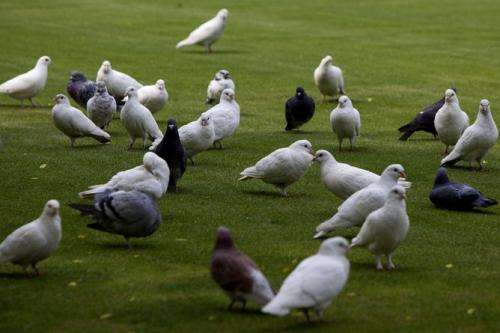No evidence H7N9 spreads between humans—but fear does

It's ten years since SARS (severe acute respiratory syndrome) upset our complacency about infectious diseases and now we are faced by another "new" disease. H7N9 bird flu is currently spreading through China and so far there have been more than 108 cases and the virus has caused at least 22 deaths.
To this point, the outbreak has largely been concentrated in Eastern China. The first case appeared in Shanghai in late February, though the disease was not formally diagnosed until March. Over the past month, the virus has spread into neighbouring provinces as well as to Beijing further north and Henan towards the interior. And in the last few days it has also appeared in Taiwan.
One of the world's leading flu experts at the World Health Organization (WHO) has labelled H7N9 as one of the most lethal influenza viruses so far encountered. And a number of experts are now claiming the virus may be more transmissible to humans than previous strains of bird flu.
Over the past month, the Chinese poultry industry had taken a huge hit losing more than 10 billion yuan (A$1.57 billion) as it laboured to survive under major campaigns to slaughter thousands of birds and close many poultry markets. In parts of Eastern China poultry consumption has fallen by more than 50% and chicken prices have plummeted.
Unlike earlier outbreaks of avian flu, with H7N9 infected birds seem to show no visible signs of illness. Currently the virus also shows no signs of spreading from person to person, but such a transfer cannot yet be ruled out.
Interestingly, the virus seems to replicate the effects of traditional human influenza, largely affecting the elderly. All the deaths so far have involved elderly Chinese, whereas most young children, who have become infected, seem to have recovered without being seriously ill. Many of those infected do not seem to have any contact with infected birds.
What we continue to overlook is that parts of China have been an "incubation chamber" for a wide range of infectious diseases for centuries. Such infections have been permanently maintained in natural reservoirs among a variety of wild animals. It is only when we intrude upon such reservoirs or in some way modify the surrounding environment that such infections may invade other species and pose a threat for humans.

As far as infectious diseases are concerned, we inhabit a borderless, interconnected world, where disease agents move almost at will, and where modern modes of transport can move such infections anywhere in the world within a few hours.
Eastern China remains one of the world's busiest air transport nodes and regular air links to Australia and New Zealand, as well as to many other parts of the world, could easily transport the virus within ten to 12 hours.
Our experience of SARS, avian and swine flu clearly indicate it's impossible to protect Australia in a time of mass human movement as well as from normal bird migratory patterns. Airport health inspections and quarantine offer little security insofar as an infected passenger may well show no symptoms of illness at the time of arrival.
So what messages emerge from the present outbreak of H7N9?
First, we should continue to marvel at the resilience and ability of the microbial world. Not only do microbes have a numerical advantage over us, but they possess the ability to evolve and mutate, as well as adapt to any assault that we may launch against them.
Second, there is little doubt that we stand perched on the edge of a resurgence of infectious disease. While in many ways we may be better prepared this time around, the fact remains that we still remain exceedingly vulnerable.
Third, epidemics and pandemics produce an extraordinary outpouring of emotion – out of all proportion to the number of actual cases and deaths. And we really do not understand the mechanisms of emotional contagion and the diffusion of fear.
In addition, many people remain highly sceptical of the government's ability to protect them during times of epidemic crisis. In China, people are currently harking back to the government's "cover-up" of the SARS outbreak.
An important part of this remains governments' inability to recognise that ordinary people perceive risk very differently from how experts perceive it. Risk to experts is something that can be measured and quantified by simply comparing those exposed to an infectious threat with those not exposed.
But for you and I, risk is something different. It's shaped by personal attitudes and the way we see the world around us.
Several international research teams are working on vaccines for H7N9, including the WHO's Collaborating Centre for Reference and Research on Influenza in Melbourne. The researchers say they could have a solid candidate within a few weeks.
In the meantime, we need to ensure that the fear about the virus is kept under wraps.
This story is published courtesy of The Conversation (under Creative Commons-Attribution/No derivatives).















